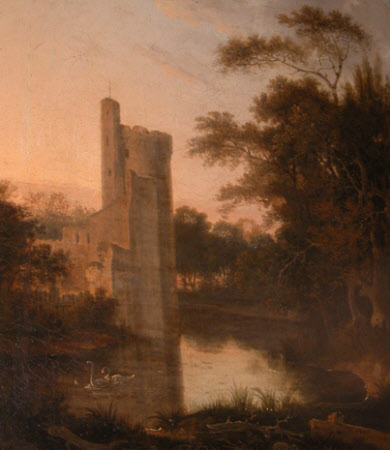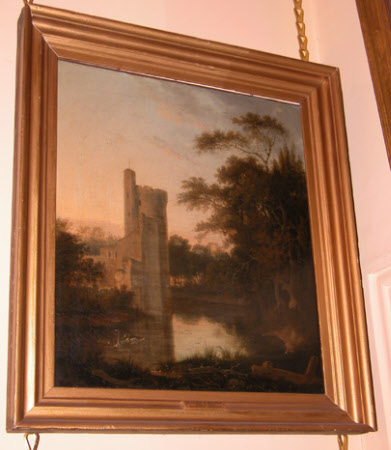Caister Castle, Norfolk
Sir George Howland Beaumont (Dunmow 1753 - Coleorton 1827)
Category
Art / Oil paintings
Date
1785 (signed and dated)
Materials
Oil on canvas
Measurements
225 x 350 mm
Place of origin
West Caister
Order this imageCollection
Anglesey Abbey, Cambridgeshire
NT 515486
Caption
Sir George Beaumont, although better known as an arbiter of taste and founder member of the National Gallery, was a painter of tremendous industry - more than 2,000 of his pictures survive. He painted many landscapes, Constable himself speaking approvingly of 'a beautiful little landscape' which Sir George painted for him. Although he based his style on the work of Claude and Richard Wilson, his work fell far short of their standard. In this painting Beaumont depicts Caister Castle, Norfolk, which was one of the earliest brick castles, built between 1432-5 by Sir John Fastolf, upon whom Shakespeare based his fat, comically cowardly knight, Falstaff.
Summary
Oil painting on canvas, Caister Castle, Norfolk, 1785 by Sir George Howland Beaumont (Dunmow 1753 – Coleorton 1827), signed and dated GHB 1785. A view of the fifteenth-century Caister Castle with its tower and moat, there are two swans swimming in the moat to the left. Caister-on-sea, Norfolk Caister is a spectacular ruin, with a single round tower rising some 90 foot above the River Bure and an accompanying stair turret almost 100 foot high. The builder was Sir John Fastolf who was a tough character who made his fortune in the French wars and built Caister out of the proceeds. It was one of the earliest English brick castles, built between 1432 and 1435, and was even more unusual in being defended by an elaborate system of moats; as a travelled man, Fastolf may have been influenced by the contemporary German Wasserburg (water-castle). The main castle at Caister consisted of a rectangular building around a courtyard; it had gatehouses in the east and west walls, and the tall, slender tower in the west corner. There was a forecourt to the east of the main block; its equivalent on the west side which had access to a canal linked to the Bure, has been replaced by later buildings. In 1469 the Duke of Norfolk claimed Caister and successfully laid siege to it - supported (according to the Pastons) by 3,000 men against their 30. The Pastons later regained Caister and lived there until 1599. It is now mainly ruinous, but it is still possible to climb the great tower, and the hall has been converted into a well-known motor museum. Label on frame 'Sir George H. Beaumont, 1753-1827, Caister Castle'.
Provenance
Leggatt, London, 1950. Bequeathed to the National Trust by Huttleston Rogers Broughton, 1st Lord Fairhaven (1896-1966) with the house and the rest of the contents.
Credit line
Anglesey Abbey, The Fairhaven Collection (National Trust)
Makers and roles
Sir George Howland Beaumont (Dunmow 1753 - Coleorton 1827), artist


